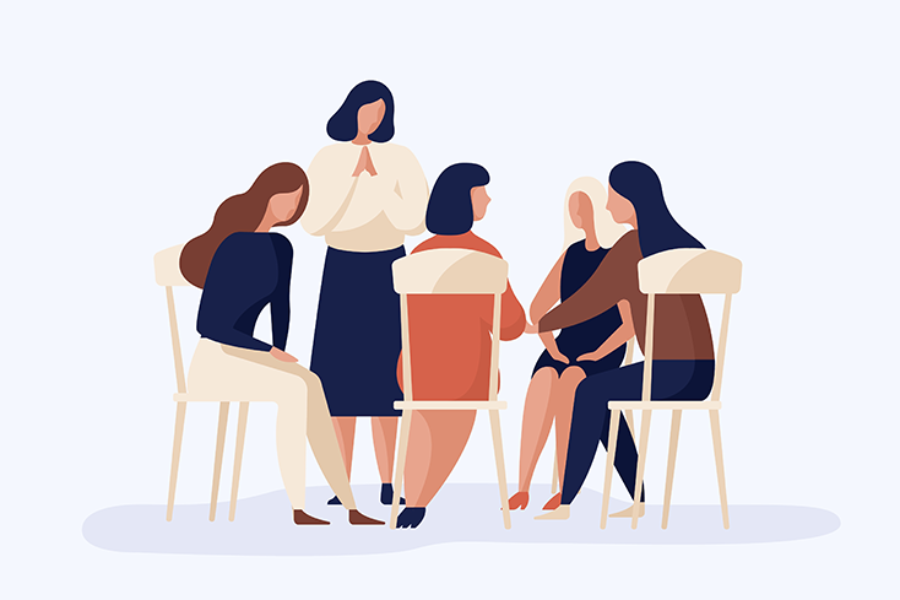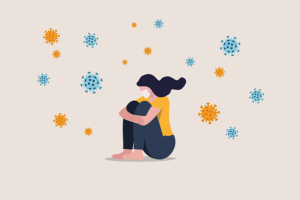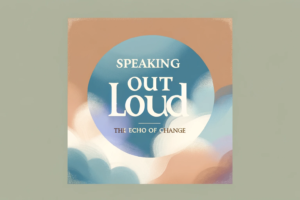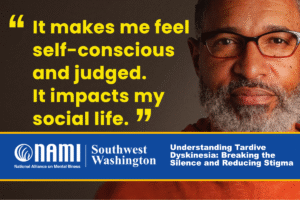By Judith Viers
My name is Judith Marie Kuzmak Viers, or just Judy. And my childhood friends call me Judes. My neighbor used to sing the Beatles song “Hey Jude,” which includes the lyrics, “take a sad song and make it better.” That lyric is why I choose to share my story. Beyond being a music fan, I’m a mom, a writer, an artist, a hiker and a dancer. And I try to make the world a better place.
I have been on my own mental health journey and witnessed the painful turns in the journeys of others; I lost two loved ones during the COVID-19 pandemic to suicide. I don’t want anyone else to go down that road. I want people to know that every day is a new day and we should never give up on life.
I hope that my own story and struggle will help someone else and inspire them to take the next step in their own healing journey.
My Experience With Bipolar Disorder
I started suffering from symptoms of depression at 12 years old when my newborn sister died. Having been raised Christian, I was devastated by her death and that my prayers for her life were not answered. Yet, I also truly believed I could pray the depression away. By my 30s, several years after my mom lost her battle to breast cancer, I was diagnosed with bipolar disorder and began experiencing severe manic episodes.
I began to feel like I was a hopeless cause. When I was depressed, I believed that whoever tried to help me would be dragged into my deep dark hole of despair. So, I stayed silent. There were days when the only thing I did was breathe, drink water and eat a little junk food — I didn’t even go outside. I remember trying to speak or write, but I wasn’t able to do so because I experienced brain fog as a symptom of my depression.
My hopelessness got to the point where I began to doubt every positive prior experience. I eventually got treatment because of something my father said to me years earlier. In 2003, after the funeral of my young neighbor who died by suicide, my dad said that suicide is “the worst thing that can happen to a parent.” Those words resonated with me. In 2011, I was in a low state, had difficulty sleeping, experienced racing thoughts and even developed a plan to end my life. But I remembered my dad’s words and voluntarily went to the hospital to be safe. Even though my mind said, “the world would be better off without you,” my dad’s words rang true, and I know my actions would devastate him.
The depression eventually faded, but then I began experiencing the highs of mania. Having a manic episode is traumatic and embarrassing — and processing the shame you feel for your thoughts and actions while manic is a complex, lifelong process. I was involuntarily hospitalized multiple times for mania.
Finding The Right Tools For Recovery
For 20 years, I prayed alone in my room, hoping that my depression and mania would go away, but I never found any long-lasting success. Then I discovered that prayer without action does not work for me — and I need to rely on several different wellness tools.
Part of my recovery required admitting that I need professional help too. My personal coping mechanisms and spirituality were not enough to tackle my bipolar disorder alone. Now, I work with an incredible therapist. In therapy, I share everything I am doing, like being a NAMI In Our Own Voice Presenter, and assess if any of my words or behaviors seem manic. I have a plan in place where two close friends or family members can contact my therapist if they are worried that I’m manic, since I can be more receptive to hearing that I am manic if I can process the information with my therapist. I also work with a wonderful psychiatrist who knows my history of adverse side effects to medications and makes sure to prescribe appropriate doses.
I also make sure to maintain social connections. I am good friends with the director of On Our Own of Carroll County, a wellness and recovery nonprofit organization that has helped be throughout my mental health journey. I still use my coping tools of going church and spending time with my close friends.
Now, I understand that being able to seek and find the help I need was the answer to my prayer. Oftentimes, we need to step out of our comfort zone to get the help we need. While my faith was temporarily affected by my mental illness, it is now so much stronger. Life truly can be a healing journey.
Finding My Purpose
I imagine being 90 years old and thinking about my life with peace and pride that I truly did the best I could. That concept of living the best life I can — doing what is on my heart — is my greatest motivation and my definition of success.
I already had my master’s degree in social work before I was hospitalized or received mental health treatment. But what took me years to learn from books, I was truly able to internalize through lived experience — and I learned so much more about the extremes of bipolar disorder through my own experience than I could have learned from a textbook. I understand how to relate to others. I can empathize with those experiencing depression and mania. I remember the lies I believed — that life will never get better and you can’t open up about your struggles to loved ones. I now know nothing in life is permanent, even severe mental illness can be treated and friendships are built by being open in the good and bad times. Not only have I been on my own healing journey, I can help others in their journeys as well.
I’ve even started a non-profit, Share Hope Through Art, to use art as a way to share my story. I incorporate sayings like “you matter” and “the world is better with you in it” into my work. I’m not sure what my future holds, but I hope to continue to find peace in knowing that I’m doing the best I can. Right now, it’s being the best mom I can be and doing what I can to be a ray of hope in people’s lives. I want to illustrate how hope and healing are possible — and we should never give up on life.
Judith Marie Kuzmak Viers is the founder of Share HOPE through ART and an author. She writes, speaks and makes art to contribute to suicide prevention and awareness. Learn more about her mission and her speaking engagements at www.sharehopeart.com.
Source: https://nami.org/Blogs/NAMI-Blog/September-2022/Finding-My-Life-s-Purpose-in-Suicide-Prevention-and-Peer-Support




